Chronic inflammation is quietly linked to some of today’s most serious health concerns—from heart disease and diabetes to arthritis and even depression. While acute inflammation is a natural and essential response to injury or infection, chronic inflammation acts like a slow-burning fire in the body, disrupting vital systems and weakening immune defenses over time.
The good news? Your daily diet holds immense power to calm that internal fire. By regularly consuming the right anti-inflammatory foods, you can reduce inflammation naturally, support long-term wellness, and potentially prevent disease before it takes root.
In this article, we’ll explore the top 10 anti-inflammatory foods you should be eating daily, backed by nutritional science and practical tips for real-life application. Whether you’re looking to manage pain, boost energy, or simply feel better every day, these foods are a powerful place to start.
1. Fatty Fish: Nature’s Omega-3 Powerhouse
Chronic inflammation is increasingly linked to the imbalance between pro-inflammatory and anti-inflammatory nutrients in the diet—especially fats. Among the most powerful foods to correct this imbalance are fatty fish, including salmon, mackerel, sardines, herring, and anchovies. These cold-water fish are rich in long-chain omega-3 fatty acids, notably EPA (eicosapentaenoic acid) and DHA (docosahexaenoic acid), which have been clinically proven to reduce inflammation at a systemic level.
The Anti-Inflammatory Mechanism of Omega-3s
Omega-3s are incorporated into the phospholipid membranes of cells, where they influence inflammatory pathways. Specifically, they:
- Suppress the production of pro-inflammatory eicosanoids derived from arachidonic acid
- Inhibit nuclear factor kappa B (NF-κB), a key molecule that turns on inflammatory genes
- Reduce expression of cytokines like IL-6 and TNF-α, which are elevated in chronic diseases
- Promote the formation of resolvins and protectins, compounds that actively resolve inflammation
A randomized controlled trial published in The Journal of Clinical Lipidology found that patients consuming 2.5 grams of EPA/DHA daily had a 22% reduction in CRP levels over 12 weeks—highlighting a measurable drop in inflammation biomarkers.
✅ Expert Summary
Real-World Ways to Include Fatty Fish
Adding anti-inflammatory fatty fish into your diet doesn’t require complex recipes or gourmet preparation. Here are some sustainable and practical approaches:
Smart Cooking Methods to Preserve Omega-3s
- Bake or steam fish instead of frying to prevent oxidation of delicate fatty acids
- Use herbs like rosemary or thyme, which offer additional antioxidant protection
- Pair fish with vitamin C-rich veggies like bell peppers to enhance nutrient synergy
Budget-Friendly Fish Options That Don’t Sacrifice Benefits
- Canned sardines or mackerel are affordable and shelf-stable alternatives to fresh fillets
- Look for wild-caught salmon on sale, freeze for later use
- Choose frozen fish over farm-raised varieties to maximize omega-3 content
📌 Did You Know?
Sustainability Note
Opt for sustainably sourced fish certified by MSC (Marine Stewardship Council) or similar organizations to protect ocean ecosystems while supporting your health.
2. Berries: Polyphenol-Rich Allies Against Inflammation
Berries—particularly blueberries, strawberries, blackberries, and raspberries—are among the most nutrient-dense fruits available. Their vibrant colors aren’t just visually appealing; they signal a high concentration of bioactive compounds, especially polyphenols such as anthocyanins, ellagic acid, and quercetin. These phytochemicals are powerful anti-inflammatory agents that combat oxidative stress and modulate inflammatory pathways. According to Healthline, regular consumption of berries has been associated with reductions in inflammation markers such as CRP and IL-6.
The Science Behind Berries and Inflammation
Inflammation is often driven by an overproduction of free radicals and reactive oxygen species (ROS), which damage tissues and trigger immune overactivation. Berries counter this through multiple mechanisms:
- Anthocyanins reduce oxidative stress by scavenging ROS and inhibiting NF-κB, the transcription factor that activates inflammatory cytokines
- Ellagic acid blocks enzymes like COX-2 that drive chronic inflammation, similar to how NSAIDs work—but naturally
- Quercetin stabilizes mast cells and prevents the release of histamines and pro-inflammatory cytokines like IL-1β
In a double-blind, placebo-controlled study published in the American Journal of Clinical Nutrition, obese adults who consumed a blueberry smoothie daily for six weeks experienced significantly lower levels of CRP and IL-6, two critical markers of systemic inflammation.
✅ Expert Summary
Optimal Ways to Incorporate Berries into Your Routine
Integrating berries into your diet doesn’t require complex recipes. Here are some easy and evidence-based methods:
- Add a handful of frozen blueberries to your morning oats or protein shake
- Use blackberries and raspberries as natural sweeteners in plain Greek yogurt
- Make a berry compote with cinnamon and chia for an antioxidant-packed topping
Fresh vs. Frozen vs. Freeze-Dried – What’s Best?
Each form of berry offers unique benefits depending on your goals and lifestyle:
- Fresh berries are ideal for nutrient variety, but lose antioxidants quickly after harvest
- Frozen berries retain up to 90% of their original polyphenol content and are cost-effective year-round
- Freeze-dried berries are highly concentrated and portable—perfect for trail mixes or smoothie powders
📌 Did You Know?
Synergistic Pairings for Maximum Anti-Inflammatory Impact
Pairing berries with other nutrient-dense foods amplifies their benefits. For instance:
- Combine berries with chia seeds for added omega-3s and fiber
- Blend with turmeric and black pepper for a supercharged anti-inflammatory smoothie
- Serve over fermented kefir to support gut health and immune modulation
3. Leafy Greens: The Alkaline Foundation of Anti-Inflammation
Leafy greens such as kale, spinach, arugula, Swiss chard, and collard greens are not just “diet food”—they are metabolic regulators that play a critical role in neutralizing inflammation at the root. Rich in chlorophyll, folate, magnesium, and flavonoids, these greens promote cellular health, protect DNA, and regulate immune responses.
What makes leafy greens unique is their ability to support alkalinity and gut microbiota, two underappreciated yet powerful levers of inflammation control. Chronic acidosis from highly processed, meat-heavy diets can create a pro-inflammatory internal environment. Leafy greens, by contrast, shift the body’s pH toward balance and feed beneficial gut bacteria—which then produce short-chain fatty acids like butyrate that reduce systemic inflammation.
Anti-Inflammatory Nutrients in Leafy Greens
- Vitamin K1: Supports vascular integrity and reduces oxidative stress
- Folate (B9): Essential for DNA methylation and immune regulation
- Magnesium: A cofactor for over 300 enzymes, many of which reduce inflammation
- Lutein and Zeaxanthin: Reduce oxidative damage in eye, brain, and vascular tissues
A study in Nutrients journal found that individuals consuming one or more servings of leafy greens daily had up to 40% lower levels of inflammatory markers like IL-6 and TNF-α compared to those who rarely ate them.
✅ Expert Summary
Nutritional Comparison of Common Leafy Greens
| Leafy Green | Vitamin K1 (mcg) | Magnesium (mg) | Folate (mcg) | Chlorophyll (mg) |
|---|---|---|---|---|
| Spinach | 482.9 | 79 | 194 | 23 |
| Kale | 817 | 47 | 141 | 19 |
| Arugula | 108.6 | 47 | 97 | 15 |
| Swiss Chard | 830 | 81 | 14 | 21 |
How to Eat Leafy Greens Without Getting Bored
- Blend raw spinach into smoothies with berries and avocado
- Make a massaged kale salad with olive oil, lemon juice, and tahini
- Sauté Swiss chard in garlic and olive oil as a nutrient-rich side dish
- Try collard wraps as a low-carb, anti-inflammatory lunch option
💡 Quick Tip
4. Turmeric & Ginger: Spices That Silence Inflammation
Turmeric (Curcuma longa) and ginger (Zingiber officinale) are not just culinary staples—they’re among the most potent natural anti-inflammatory agents known to science. Revered in Ayurvedic and Traditional Chinese Medicine for centuries, both roots contain bioactive compounds that inhibit the molecular triggers of chronic inflammation.
Curcumin: The Golden Compound in Turmeric
Turmeric’s anti-inflammatory power lies in curcumin, its most studied polyphenol. However, curcumin is poorly absorbed on its own. Combining it with black pepper (piperine) or a fat source increases its bioavailability by up to 2,000%.
Mechanisms of action include:
- Inhibiting NF-κB, a master switch for inflammation
- Blocking COX-2 and LOX enzymes (same targets as NSAIDs)
- Downregulating IL-1, IL-6, and TNF-α, key cytokines in autoimmune conditions
A meta-analysis published by the National Institutes of Health concluded that curcumin supplementation significantly reduced CRP levels across multiple populations, including those with metabolic syndrome, osteoarthritis, and diabetes.
Gingerol: The Bioactive in Ginger
Ginger contains gingerols and shogaols, compounds that modulate prostaglandin synthesis and suppress the formation of inflammatory mediators such as leukotrienes. Ginger has also shown promise in reducing pain and inflammation in osteoarthritis through its analgesic effects.
✅ Expert Summary
📊 Clinical Impact of Turmeric and Ginger on Inflammatory Markers
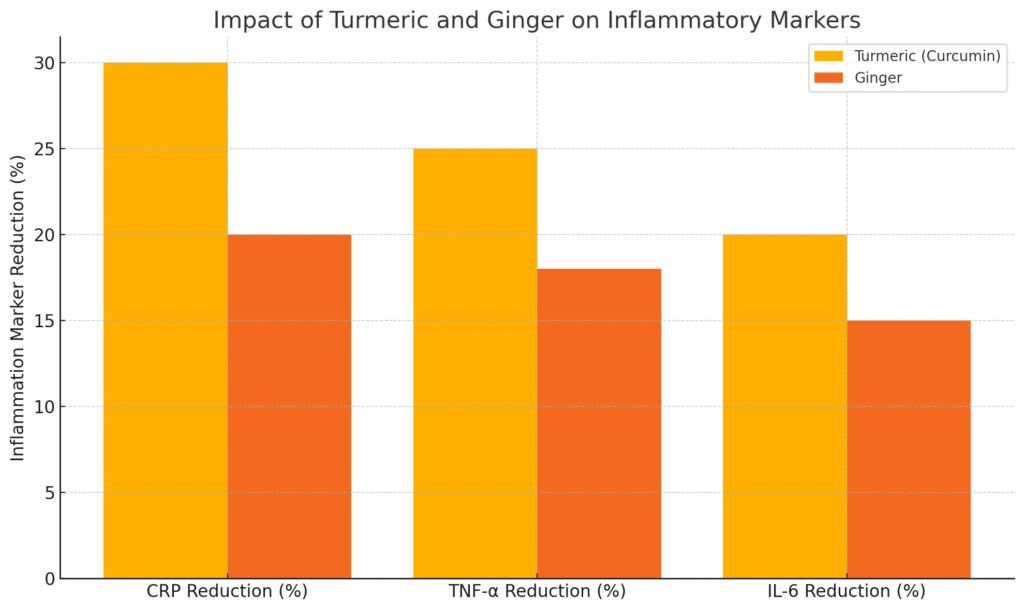
Practical Ways to Consume Turmeric and Ginger Daily
- Brew golden milk with turmeric, black pepper, and coconut milk
- Add grated ginger to stir-fries, soups, or green tea
- Use turmeric powder in rice, lentils, or roasted vegetables
- Blend fresh ginger into smoothies with spinach and berries
📌 Did You Know?
5. Extra Virgin Olive Oil: The Liquid Gold of Inflammation Control
Extra virgin olive oil (EVOO) is more than just a kitchen staple in Mediterranean cultures—it’s a nutritional powerhouse with potent anti-inflammatory benefits. Rich in monounsaturated fats (MUFAs) and a unique class of polyphenols, especially oleocanthal, EVOO acts similarly to NSAIDs by reducing inflammation at the biochemical level.
Oleocanthal: Nature’s Ibuprofen
The peppery kick you feel in the back of your throat when consuming high-quality EVOO comes from oleocanthal, a compound shown to inhibit the same enzyme (COX-1 and COX-2) targeted by ibuprofen.
Additional anti-inflammatory agents include:
- Hydroxytyrosol: One of the most powerful dietary antioxidants
- Squalene and lignans: Contribute to immune regulation and lipid balance
- Vitamin E: Protects against oxidative stress in cell membranes
A pivotal study in The New England Journal of Medicine found that people following a Mediterranean diet rich in EVOO had lower levels of CRP and IL-6, and significantly reduced cardiovascular events.
✅ Expert Summary
📊 Anti-Inflammatory Score of Common Cooking Fats

How to Choose High-Quality EVOO for Maximum Benefit
- Look for cold-pressed, unfiltered EVOO with a harvest date within the last 12 months
- Choose bottles in dark glass to prevent light degradation of polyphenols
- Opt for oils labeled PDO (Protected Designation of Origin) or from single-estate producers
Best Ways to Use EVOO Without Compromising Benefits
- Use raw over salads, vegetables, or hummus for maximum polyphenol content
- Add to cooked foods after heat exposure, not during frying
- Drizzle over leafy greens or grains to enhance fat-soluble nutrient absorption
📌 Did You Know?
6. Nuts and Seeds: Dense, Portable Anti-Inflammatory Nutrition
Nuts and seeds are often praised for their healthy fats, but their value extends far beyond that. They are micronutrient-dense, anti-inflammatory powerhouses that provide omega-3 fatty acids, magnesium, polyphenols, fiber, and plant sterols. Regular consumption is linked to lower systemic inflammation, improved lipid profiles, and better glycemic control.
Among the most potent options are walnuts, chia seeds, flaxseeds, almonds, and pumpkin seeds, each offering a unique anti-inflammatory profile.
How Nuts and Seeds Reduce Inflammation
- Omega-3s (ALA): Especially abundant in flaxseeds and chia seeds, alpha-linolenic acid (ALA) is a plant-based omega-3 that helps regulate prostaglandin production
- Magnesium: A cofactor for anti-inflammatory enzymes and a modulator of the NLRP3 inflammasome
- Polyphenols: Flavonoids and tannins in almonds and walnuts modulate oxidative stress pathways and cytokine expression
- Prebiotic fibers: Support gut microbiota diversity, enhancing immune balance and inflammation resolution
A prospective cohort study in Circulation showed that consuming a handful of mixed nuts daily was associated with a 35% lower risk of inflammatory-related death, including cardiovascular and respiratory diseases.
✅ Expert Summary
📊 Nutrient Comparison: Anti-Inflammatory Power per 30g Serving
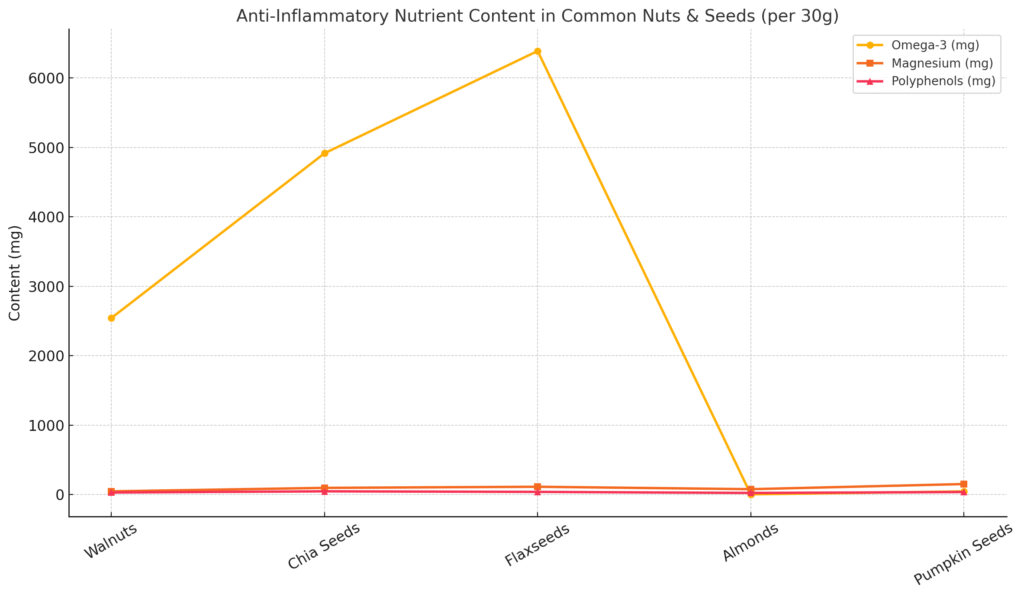
How to Incorporate Nuts and Seeds Daily
- Sprinkle chia or flaxseeds into smoothies, yogurt, or overnight oats
- Add walnuts or almonds to salads, trail mix, or roasted veggies
- Use ground flaxseed or chia gel as an egg replacement in baking
- Enjoy a tablespoon of pumpkin seeds as a magnesium-rich afternoon snack
📌 Did You Know?
7. Green Tea & Matcha: Catechin-Rich Defenders of Cellular Health
Green tea and its more concentrated cousin, matcha, are among the most powerful plant-derived anti-inflammatory beverages available. Revered in Asian medicine for centuries, these teas are packed with catechins, a subclass of polyphenols known for their antioxidative and immunomodulatory properties. The most potent of these is epigallocatechin gallate (EGCG).
EGCG: The Catechin That Controls Inflammation at a Genetic Level
EGCG doesn’t merely neutralize free radicals; it actively influences genetic expression and intracellular signaling related to inflammation. Key anti-inflammatory actions of EGCG include:
- Suppressing NF-κB activation, thereby reducing the transcription of pro-inflammatory cytokines
- Inhibiting COX-2 enzyme activity, reducing pain and swelling
- Modulating MAPK pathways, crucial in inflammatory cell responses
- Enhancing Nrf2 activity, which upregulates the body’s own antioxidant defenses
A randomized controlled trial in The Journal of Inflammation showed that EGCG supplementation led to a 31% reduction in IL-6 and TNF-α levels in patients with rheumatoid arthritis, alongside reported reductions in joint pain.
✅ Expert Summary
Matcha vs. Green Tea: A Concentration Comparison
Unlike steeped green tea, matcha is powdered whole-leaf tea, meaning you consume the entire leaf and all its nutrients—resulting in up to 3x more EGCG than brewed tea.
| Compound | Brewed Green Tea (1 cup) | Matcha (1 tsp powder) |
|---|---|---|
| EGCG | 30–50 mg | 100–135 mg |
| L-Theanine | 6 mg | 20–30 mg |
| Chlorophyll | Trace | 30–40 mg |
Alt Text: Table comparing EGCG, L-theanine, and chlorophyll levels in brewed green tea vs. matcha.
Caption: Matcha contains significantly more bioactive compounds than traditional brewed green tea, enhancing its anti-inflammatory effects.
Best Practices to Maximize Bioavailability
- Brew green tea at 160–175°F (70–80°C) to preserve catechins
- Add a squeeze of lemon to increase EGCG stability and absorption
- Avoid drinking green tea with iron-rich meals, as iron can inhibit catechin uptake
- Choose ceremonial-grade matcha for the highest purity and potency
📌 Did You Know?
8. Fermented Foods & Probiotics: Modulating Inflammation via the Gut-Immune Axis
Inflammation doesn’t start in the joints or bloodstream—it often begins in the gut. The gastrointestinal tract is not only the body’s largest interface with the external environment but also home to over 70% of immune cells. This makes gut health a central pillar in controlling chronic inflammation, and fermented foods play a critical role in this equation.
Fermented foods like kimchi, sauerkraut, kefir, yogurt, tempeh, miso, and kombucha contain live cultures of beneficial bacteria—probiotics—that help rebalance the gut microbiome and modulate inflammatory signaling.
How Probiotics Reduce Inflammation
The gut microbiota interacts with immune cells via the intestinal epithelium and gut-associated lymphoid tissue (GALT). When this barrier is compromised (a state known as leaky gut), endotoxins like lipopolysaccharide (LPS) can enter the bloodstream and trigger systemic inflammation.
As highlighted by PubMed, probiotics reverse this process by:
- Enhancing tight junction integrity in the gut lining
- Stimulating the production of short-chain fatty acids (SCFAs) like butyrate, which suppress NF-κB
- Outcompeting harmful bacteria that produce pro-inflammatory metabolites
- Downregulating pro-inflammatory cytokines like IL-1β, IL-6, and TNF-α
A clinical trial published in Frontiers in Immunology showed that probiotic supplementation with Lactobacillus rhamnosus and Bifidobacterium lactis reduced serum levels of IL-6 and CRP in individuals with metabolic syndrome.
✅ Expert Summary
Top Fermented Foods with Clinical Backing
- Kefir: A fermented milk product with over 30 strains of bacteria and yeast
- Sauerkraut: Rich in Lactobacillus plantarum, which reduces intestinal permeability
- Tempeh: Fermented soybeans containing isoflavones and probiotics
- Miso: Japanese paste high in Aspergillus oryzae and antioxidants
- Kombucha: A tangy, tea-based drink containing acetic acid and polyphenols
Inflammatory Conditions That Benefit from Probiotics
| Condition | Clinical Response to Probiotics |
|---|---|
| IBS & IBD | Reduced gut inflammation and bloating |
| Rheumatoid Arthritis | Decreased IL-6 and TNF-α levels |
| Psoriasis & Eczema | Improved skin barrier and reduced flare-ups |
| Obesity & Metabolic Syndrome | Lower CRP and insulin resistance |
How to Add Fermented Foods to Your Routine
- Start with 1 tablespoon of sauerkraut or kimchi daily
- Replace one snack or breakfast with plain Greek yogurt or kefir
- Use miso paste in soups or sauces—never boil it to preserve live cultures
- Brew or buy low-sugar kombucha as an afternoon digestive aid
📌 Did You Know?
9. Dark Chocolate & Cacao: Flavonoid-Rich Vascular Protectors
Dark chocolate (with ≥70% cacao) and raw cacao powder are among the most unexpectedly powerful foods for inflammation control—when consumed in moderation and without added sugars. The anti-inflammatory action comes from their abundance of flavonoids, primarily epicatechins, catechins, and procyanidins, which act at the vascular, immune, and metabolic levels.
The secret to cacao’s power lies in its dense polyphenol profile, which improves endothelial function and reduces oxidative stress—two primary drivers of vascular inflammation and chronic disease.
Epicatechins – More Than Antioxidants
Epicatechins are potent regulators of nitric oxide (NO) production, which not only relaxes blood vessels but also inhibits the adhesion of inflammatory white blood cells to arterial walls. Additional anti-inflammatory mechanisms include:
- Blocking NF-κB transcription, suppressing cytokines like IL-1β and IL-6
- Reducing expression of VCAM-1 and ICAM-1, which fuel endothelial inflammation
- Inhibiting monocyte recruitment, a key process in atherosclerosis
- Enhancing mitochondrial biogenesis, reducing ROS at the cellular level
A double-blind trial in The American Journal of Clinical Nutrition found that participants consuming high-flavonoid dark chocolate daily for 4 weeks saw a 32% decrease in CRP and 23% increase in nitric oxide levels, suggesting dual antioxidant and anti-inflammatory effects.
✅ Expert Summary
Choosing Cacao Products with Therapeutic Potential
- Select dark chocolate with ≥70% cacao, low or no added sugar
- Look for natural (non-alkalized) cacao powder, which retains more flavonoids
- Avoid “Dutch-processed” cocoa, which loses up to 80% of its anti-inflammatory compounds
- Use unsweetened cacao nibs in trail mixes or smoothies for full-spectrum polyphenols
Anti-Inflammatory Benefits Across Body Systems
| System Affected | Flavonoid Action |
|---|---|
| Vascular Health | Increased nitric oxide, reduced adhesion molecules |
| Cognitive Function | Reduced neuroinflammation and improved BDNF |
| Metabolic Health | Improved insulin sensitivity and fat oxidation |
| Immune Regulation | Lower IL-6, CRP, and TNF-α production |
📌 Did You Know?
10. Garlic & Onions: Sulfur-Rich Immunoregulators
Garlic (Allium sativum) and onions (Allium cepa) have been used medicinally for thousands of years—and modern science confirms they’re potent anti-inflammatory and immune-modulating foods. These vegetables are rich in organosulfur compounds such as allicin, diallyl disulfide, and ajoene, as well as flavonoids like quercetin, which collectively inhibit inflammatory enzymes, suppress cytokine production, and support gut-immune signaling.
Their unique biochemistry targets inflammation from both immune and metabolic pathways, making them especially relevant for individuals with cardiovascular, autoimmune, and metabolic conditions.
Allicin – The Instantly Activated Bioactive
Allicin is formed only when garlic is crushed or chopped, activating an enzyme called alliinase. Once formed, allicin exhibits powerful antimicrobial and anti-inflammatory properties by:
- Inhibiting NOX enzymes, reducing ROS production
- Suppressing TNF-α, IL-1β, and IL-6, key drivers of systemic inflammation
- Promoting the activity of glutathione and catalase, antioxidants that neutralize oxidative damage
- Downregulating TLR-4 and NLRP3 inflammasomes, reducing innate immune overactivation
In a randomized trial published in Food & Function, daily consumption of aged garlic extract led to a 28% reduction in CRP and improved immune cell profile in overweight adults.
Quercetin in Onions – A Flavonoid With Vascular Benefits
Onions are one of the richest dietary sources of quercetin, a flavonoid that:
- Inhibits mast cell degranulation, reducing allergic inflammation
- Blocks leukotriene and histamine release, key mediators of asthma and skin flare-ups
- Enhances nitric oxide bioavailability, supporting endothelial function
- Reduces NF-κB pathway activation, which orchestrates multiple inflammatory genes
Studies have shown that quercetin intake correlates with lower blood pressure, reduced CRP, and improved vascular tone, particularly when consumed raw or lightly cooked.
✅ Expert Summary
How to Use Garlic and Onions for Maximum Benefit
- Chop garlic and let it sit 10 minutes before cooking to maximize allicin formation
- Use raw onion in salads, salsa, or slaws for highest quercetin concentration
- Add minced garlic at the end of cooking to preserve active compounds
- Incorporate roasted garlic in hummus, dressings, or mashed root vegetables
📌 Did You Know?
Conclusion
Chronic inflammation is one of the most pervasive threats to modern health—but it’s also one of the most manageable. As this article has shown, the foods you choose daily can either fuel or fight inflammation. From omega-3-rich fatty fish to the polyphenols in berries and cacao, each of the ten foods explored offers distinct biochemical tools to regulate immune activity, reduce oxidative stress, and support long-term vitality.
Incorporating these anti-inflammatory foods into your daily diet isn’t about restriction—it’s about empowerment. Each meal becomes an opportunity to shift your biology toward healing, resilience, and optimized performance. By making simple, consistent choices in the kitchen, you gain control over your body’s internal terrain—and set the stage for a healthier future.
📌 Main Takeaways
- Fatty fish like salmon and sardines reduce CRP and promote anti-inflammatory lipid mediators
- Berries are rich in anthocyanins that suppress cytokines like IL-6 and TNF-α
- Leafy greens provide vitamin K, magnesium, and chlorophyll—key modulators of inflammation
- Turmeric and ginger act on COX-2 and NF-κB, mimicking the effects of NSAIDs naturally
- Extra virgin olive oil contains oleocanthal, which inhibits inflammatory enzymes and protects the heart
- Nuts and seeds offer ALA omega-3s, magnesium, and fiber that reduce systemic inflammation
- Green tea and matcha are rich in EGCG, a polyphenol that alters inflammatory gene expression
- Fermented foods like kefir and sauerkraut support gut health and reduce endotoxin-induced inflammation
- Dark chocolate and cacao improve vascular function and reduce oxidative stress
- Garlic and onions contain sulfur compounds and flavonoids that suppress immune overactivation
🔗 Further Reading
Struggling with gut issues or inflammation?
Discover natural strategies that support microbiome balance and long-term digestive health: How to Improve Gut Health Naturally
Want to boost energy, performance, and metabolic health?
Learn how to customize your macro intake to reduce inflammation and fuel your body efficiently: How to Balance Your Macros for Optimal Health
Looking for advanced supplement support?
Explore the science behind this potent mitochondrial formula designed to combat oxidative stress and systemic inflammation: Advanced Mitochondrial Formula Review



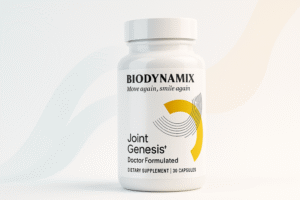







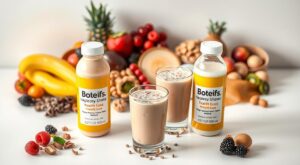
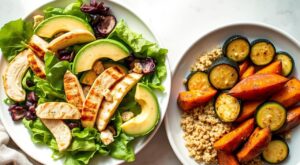

13 Responses